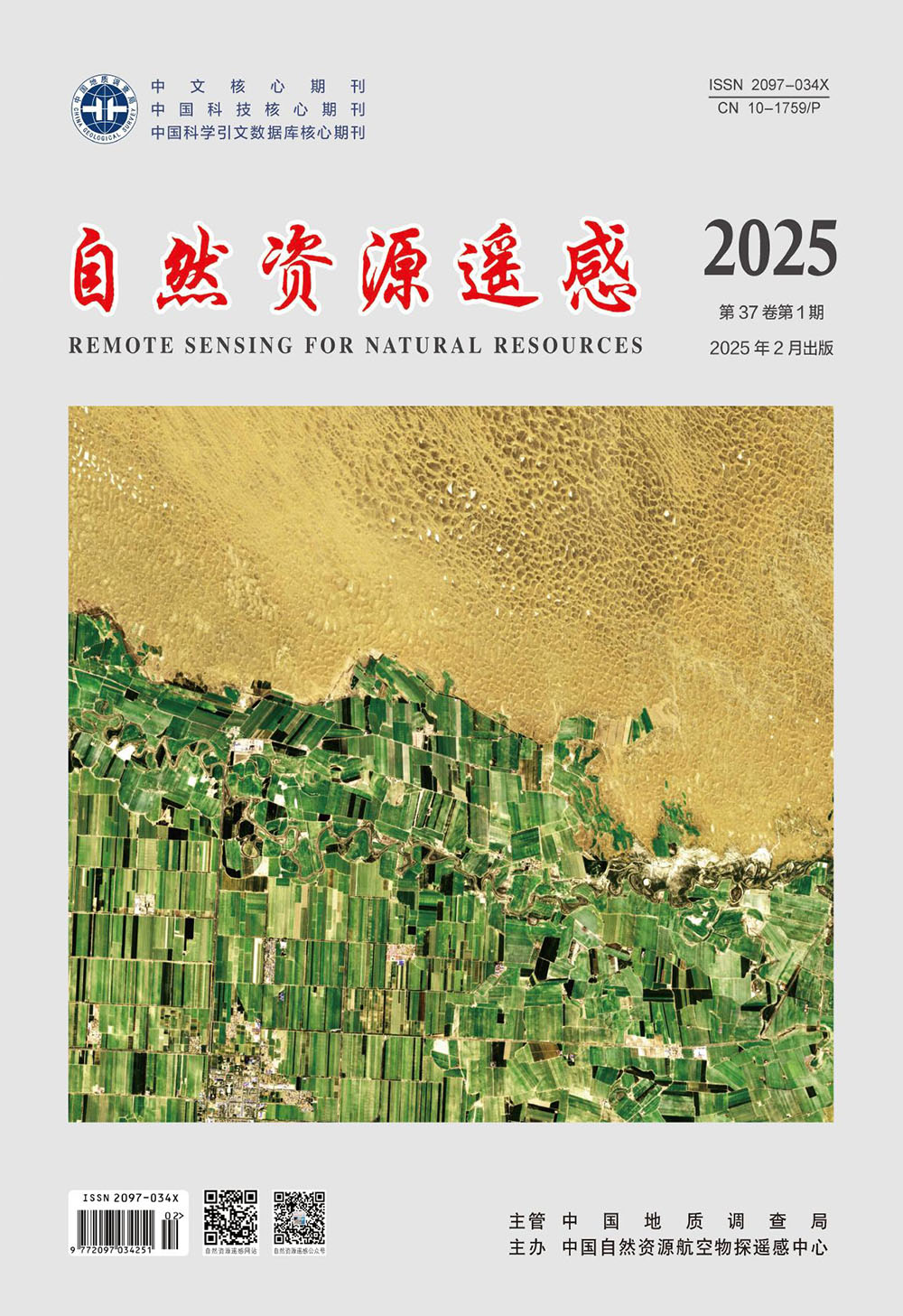|
[1]
|
杜培军, 谭琨, 夏俊士.高光谱遥感影像分类与支持向量机应用研究[M].Beijing:Science Press, 2012, 1-160.
Google Scholar
Du P J, Tan K, Xia J S, et al.Research on hyperspectral remote sensing image classification and support vector machine application[M].Beijing:Science Press, 2012, 1-160.
Google Scholar
|
|
[2]
|
Bioucas-Dias J M, Plaza A, Dobigeon N, et al.Hyperspectral unmixing overview:Geometrical, statistical, and sparse regression-based approaches[J].IEEE Journal of Selected Topics in Applied Earth Observations and Remote Sensing, 2012, 5(2):354-379.
Google Scholar
|
|
[3]
|
刘银年, 孙德新, 胡晓宁, 等.高分五号可见短波红外高光谱相机设计与研制[J].遥感学报, 2020, 24(4):333-344.
Google Scholar
Liu Y N, Sun D X, Hu X N, et al.Development of visible and short-wave infrared hyperspectral imager onboard GF-5 satellite[J].Journal of Remote Sensing(Chinese), 2020, 24(4):333-344.
Google Scholar
|
|
[4]
|
Zhong Y, Wang X, Wang S, et al.Advances in spaceborne hyperspectral remote sensing in China[J].Geo-Spatial Information Science, 2021, 24(1):95-120.
Google Scholar
|
|
[5]
|
Green A A, Berman M, Switzer P, et al.A transformation for ordering multispectral data in terms of image quality with implications for noise removal[J].IEEE Transactions on Geoscience and Remote Sensing, 1988, 26(1):65-74.
Google Scholar
|
|
[6]
|
Black M, Riley T R, Ferrier G, et al.Automated lithological mapping using airborne hyperspectral thermal infrared data:A case study from Anchorage Island, Antarctica[J].Remote Sensing of Environment, 2016, 176:225-241.
Google Scholar
|
|
[7]
|
Alberti A, Alessandro V, Pieruccini U, et al.Landsat TM data processing for lithological discrimination in the Caraculo area (Namibe Province, SW Angola)[J].Journal of African Earth Sciences (and the Middle East), 1993, 17(3):261-274.
Google Scholar
|
|
[8]
|
Hecker C, van der Meijde M, van der Werff H, et al.Assessing the influence of reference spectra on synthetic SAM classification results[J].IEEE Transactions on Geoscience and Remote Sensing, 2008, 46(12):4162-4172.
Google Scholar
|
|
[9]
|
Chang C I.An information-theoretic approach to spectral variability, similarity, and discrimination for hyperspectral image analysis[J].IEEE Transactions on Information Theory, 2000, 46(5):1927-1932.
Google Scholar
|
|
[10]
|
Camps-Valls G, Bruzzone L.Kernel-based methods for hyperspectral image classification[J].IEEE Transactions on Geoscience and Remote Sensing, 2005, 43(6):1351-1362.
Google Scholar
|
|
[11]
|
Zhu X X, Tuia D, Mou L, et al.Deep learning in remote sensing:A comprehensive review and list of resources[J].IEEE Geoscience and Remote Sensing Magazine, 2017, 5(4):8-36.
Google Scholar
|
|
[12]
|
Zhou H, Huang L, Wang Y.Deep learning algorithm and its application in optics[J].Infrared and Laser Engineering, 2019, 48(12):1226004.
Google Scholar
|
|
[13]
|
Han M, Cong R, Li X, et al.Joint spatial-spectral hyperspectral image classification based on convolutional neural network[J].Pattern Recognition Letters, 2020, 130:38-45.
Google Scholar
|
|
[14]
|
Li C, Cai R, Yu J.An attention-based 3D convolutional autoencoder for few-shot hyperspectral unmixing and classification[J].Remote Sensing, 2023, 15(2):451.
Google Scholar
|
|
[15]
|
Dobigeon N, Tourneret J Y, Richard C, et al.Nonlinear unmixing of hyperspectral images:Models and algorithms[J].IEEE Signal Processing Magazine, 2014, 31(1):82-94.
Google Scholar
|
|
[16]
|
Winter M E.N-FINDR:An algorithm for fast autonomous spectral end-member determination in hyperspectral data[C]//Imaging Spectrometry V.Denver, CO.SPIE, 1999:266-275.
Google Scholar
|
|
[17]
|
Zhang X, Sun Y, Zhang J, et al.Hyperspectral unmixing via deep convolutional neural networks[J].IEEE Geoscience and Remote Sensing Letters, 2018, 15(11):1755-1759.
Google Scholar
|
|
[18]
|
Halimi A, Altmann Y, Dobigeon N, et al.Nonlinear unmixing of hyperspectral images using a generalized bilinear model[C]//2011 IEEE Statistical Signal Processing Workshop (SSP).June 28-30, 2011, Nice, France.IEEE, 2011:413-416.
Google Scholar
|
|
[19]
|
Licciardi G A, Del Frate F.Pixel unmixing in hyperspectral data by means of neural networks[J].IEEE Transactions on Geoscience and Remote Sensing, 2011, 49(11):4163-4172.
Google Scholar
|
|
[20]
|
Zhu F, Honeine P.Biobjective nonnegative matrix factorization:Linear versus kernel-based models[J].IEEE Transactions on Geoscience and Remote Sensing, 2016, 54(7):4012-4022.
Google Scholar
|
|
[21]
|
Févotte C, Dobigeon N.Nonlinear hyperspectral unmixing with robust nonnegative matrix factorization[J].IEEE Transactions on Image Processing, 2015, 24(12):4810-4819.
Google Scholar
|
|
[22]
|
韩竹, 高连如, 张兵, 等.高分五号高光谱图像自编码网络非线性解混[J].遥感学报, 2020, 24(4):388-400.
Google Scholar
Han Z, Gao L R, Zhang B, et al.Nonlinear hyperspectral unmixing algorithm based on deep autoencoder networks[J].National Remote Sensing Bulletin, 2020, 24(4):388-400.
Google Scholar
|
|
[23]
|
朱玲, 秦凯, 李明, 等.改进的堆栈稀疏自编码矿物高光谱端元识别研究[J].光谱学与光谱分析, 2021, 41(4):1288-1293.
Google Scholar
Zhu L, Qin K, Li M, et al.Research on improved stacked sparse autoencoders for mineral hyperspectral endmember extraction[J].Spectroscopy and Spectral Analysis, 2021, 41(4):1288-1293.
Google Scholar
|
|
[24]
|
朱治青, 苏远超, 李朋飞, 等.双约束深度卷积网络的高光谱图像空谱解混方法[J].信号处理, 2023, 39(1):128-142.
Google Scholar
Zhu Z Q, Su Y C, Li P F, et al.Spectral-spatial hyperspectral unmixing using deep double-constraints convolutional network[J].Journal of Signal Processing, 2023, 39(1):128-142.
Google Scholar
|
|
[25]
|
Qu Y, Qi H.uDAS:An untied denoising autoencoder with sparsity for spectral unmixing[J].IEEE Transactions on Geoscience and Remote Sensing, 2019, 57(3):1698-1712.
Google Scholar
|
|
[26]
|
Ozkan S, Kaya B, Akar G B.EndNet:Sparse AutoEncoder network for endmember extraction and hyperspectral unmixing[J].IEEE Transactions on Geoscience and Remote Sensing, 2019, 57(1):482-496.
Google Scholar
|
|
[27]
|
Su Y, Li J, Plaza A, et al.DAEN:Deep autoencoder networks for hyperspectral unmixing[J].IEEE Transactions on Geoscience and Remote Sensing, 2019, 57(7):4309-4321.
Google Scholar
|
|
[28]
|
Khajehrayeni F, Ghassemian H.Hyperspectral unmixing using deep convolutional autoencoders in a supervised scenario[J].IEEE Journal of Selected Topics in Applied Earth Observations and Remote Sensing, 2020, 13:567-576.
Google Scholar
|
|
[29]
|
Heinz D C, Chang C I.Fully constrained least squares linear spectral mixture analysis method for material quantification in hyperspectral imagery[J].IEEE Transactions on Geoscience and Remote Sensing, 2001, 39(3):529-545.
Google Scholar
|
|
[30]
|
Palsson B, Sveinsson J R, Ulfarsson M O.Blind hyperspectral unmixing using autoencoders:A critical comparison[J].IEEE Journal of Selected Topics in Applied Earth Observations and Remote Sensing, 2022, 15:1340-1372.
Google Scholar
|
|
[31]
|
Foody G M.Approaches for the production and evaluation of fuzzy land cover classifications from remotely-sensed data[J].International Journal of Remote Sensing, 1996, 17(7):1317-1340.
Google Scholar
|
|
[32]
|
杜培军, 夏俊士, 薛朝辉, 等.高光谱遥感影像分类研究进展[J].遥感学报, 2016, 20(2):236-256.
Google Scholar
Du P J, Xia J S, Xue Z H, et al.Review of hyperspectral remote sensing image classification[J].Journal of Remote Sensing, 2016, 20(2):236-256.
Google Scholar
|






 DownLoad:
DownLoad: